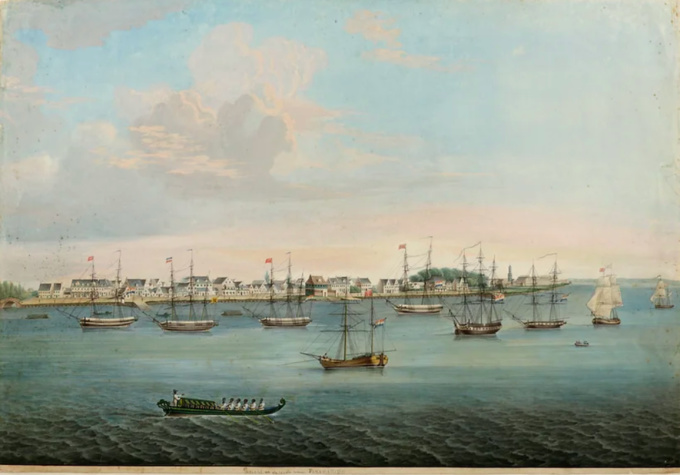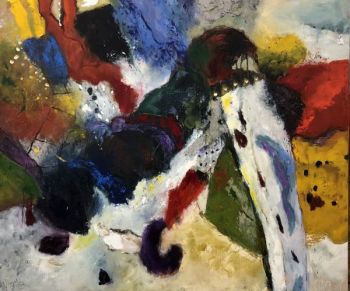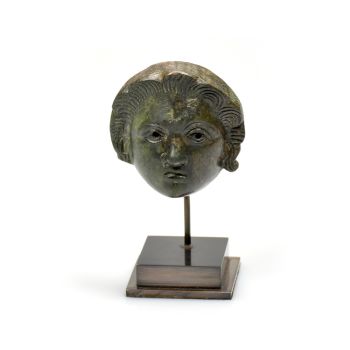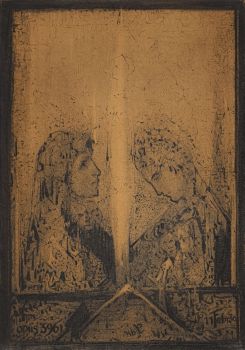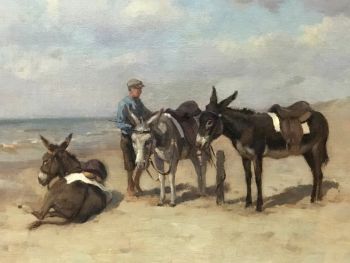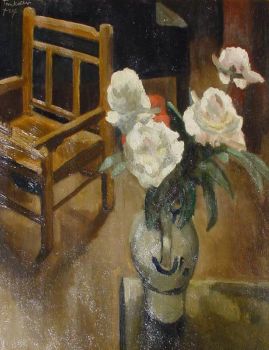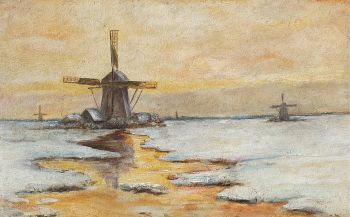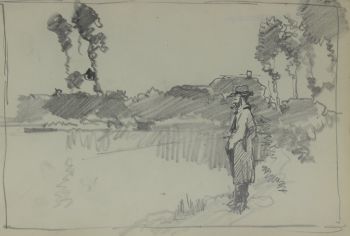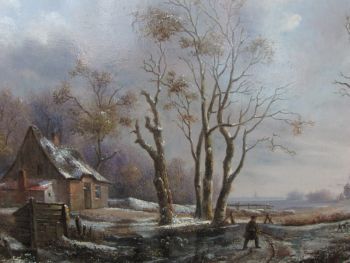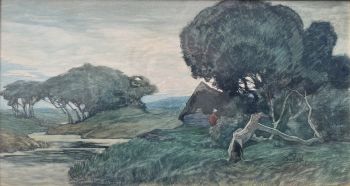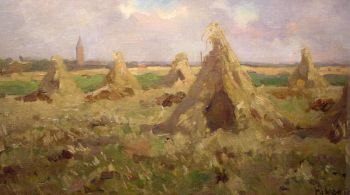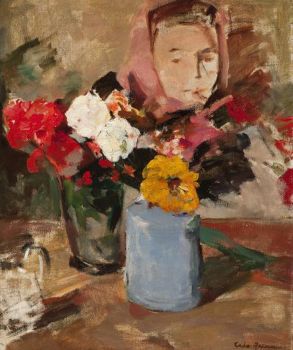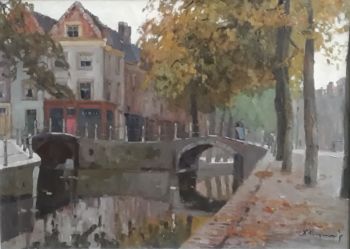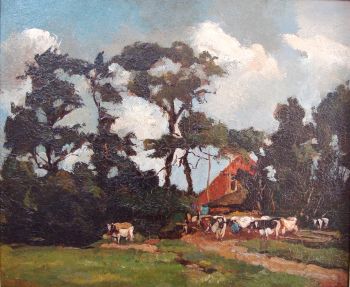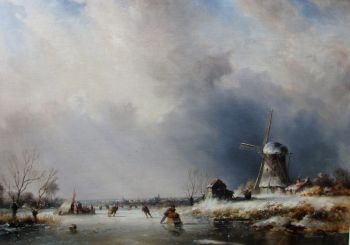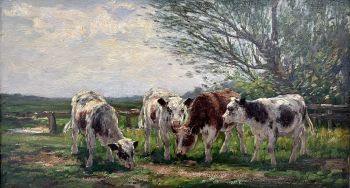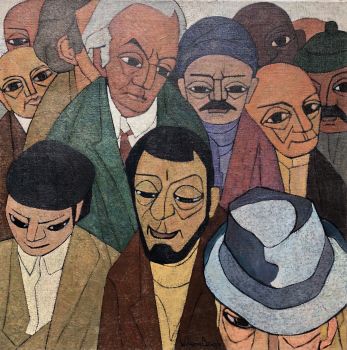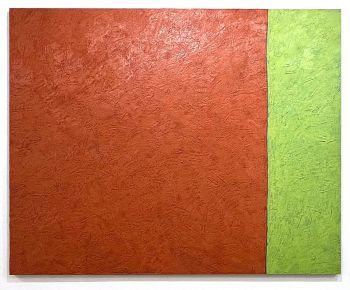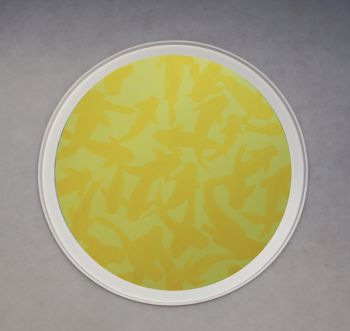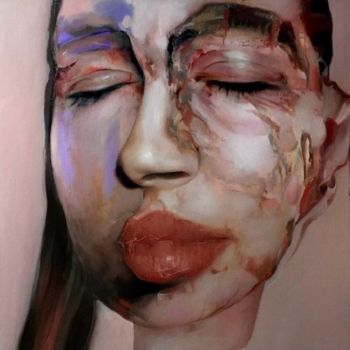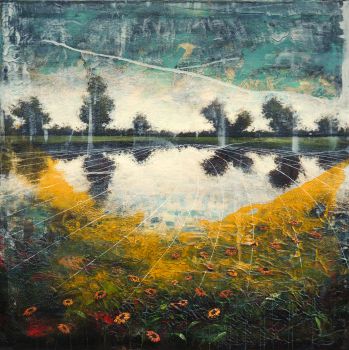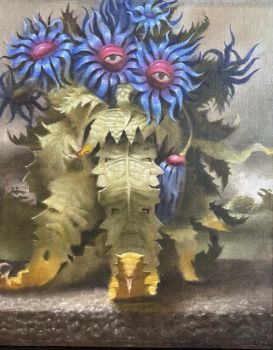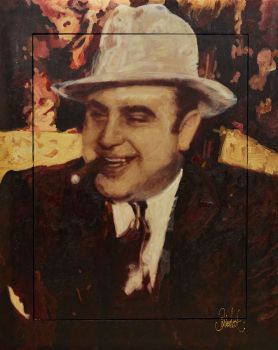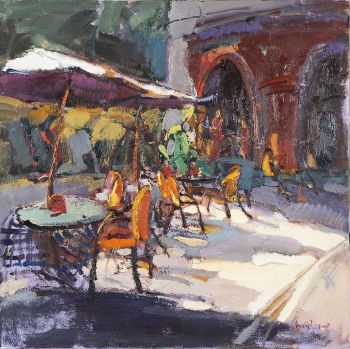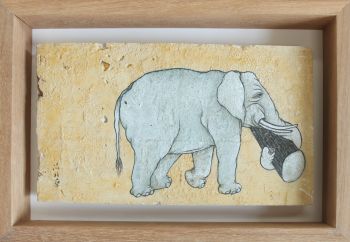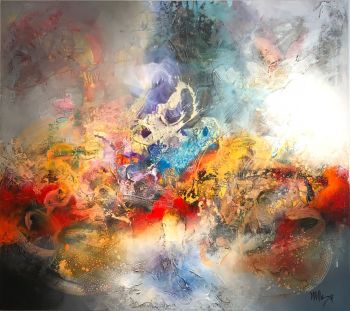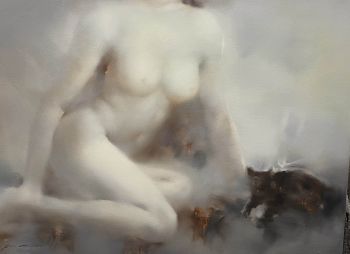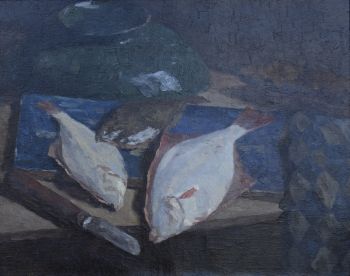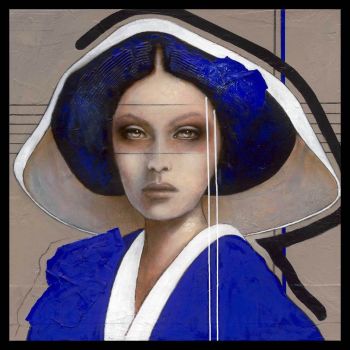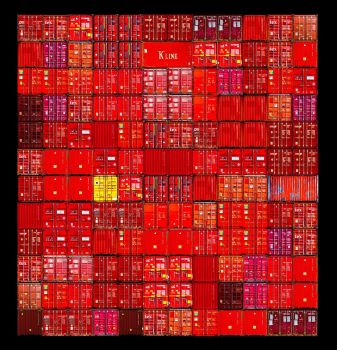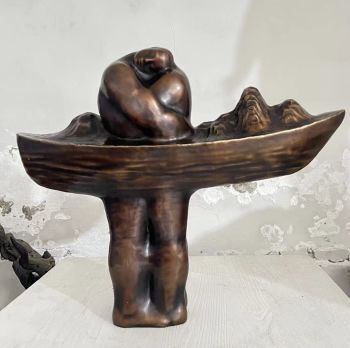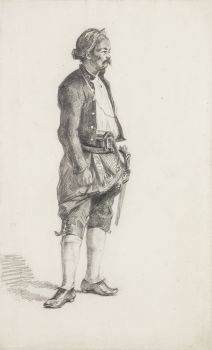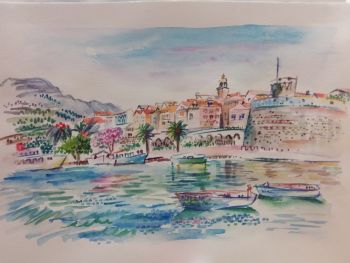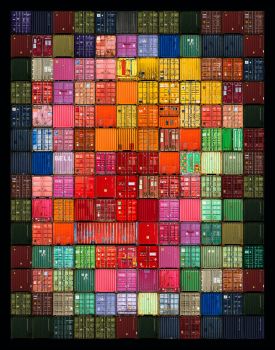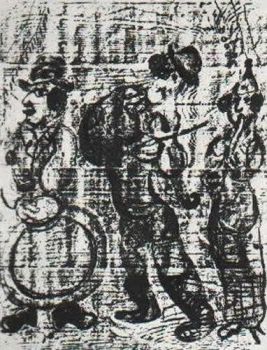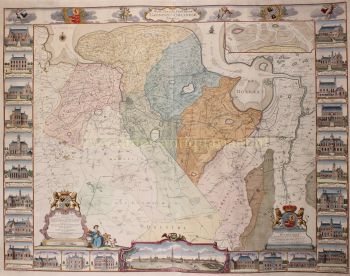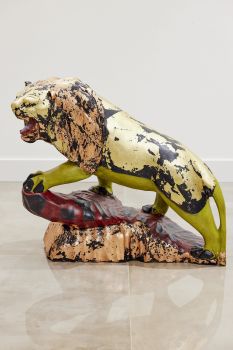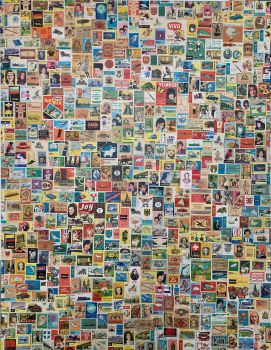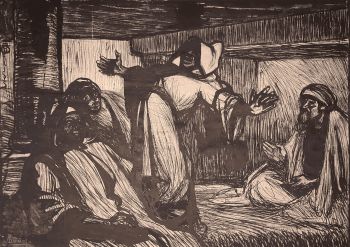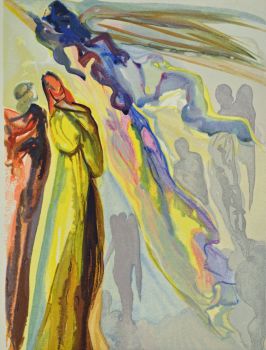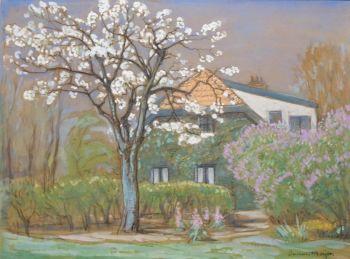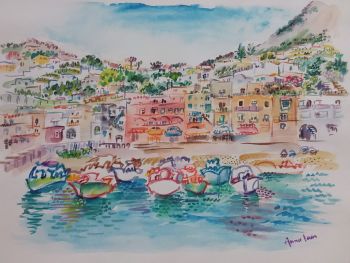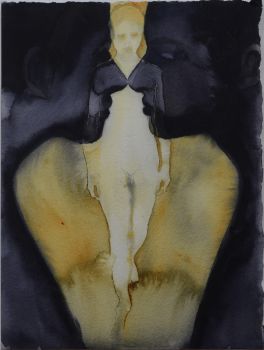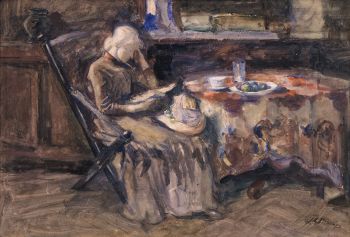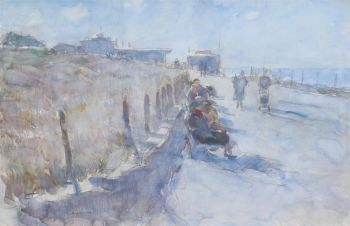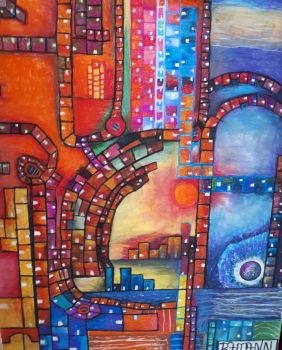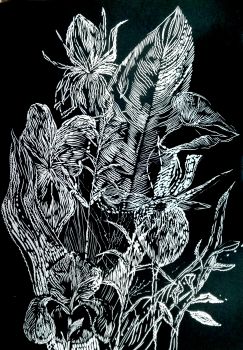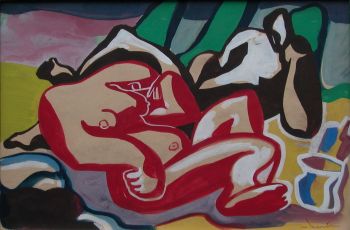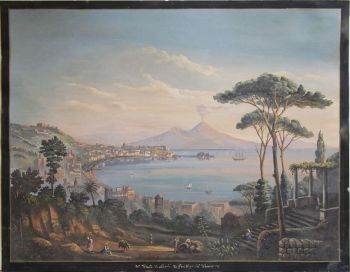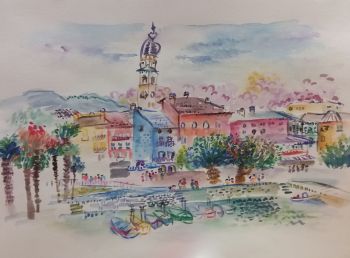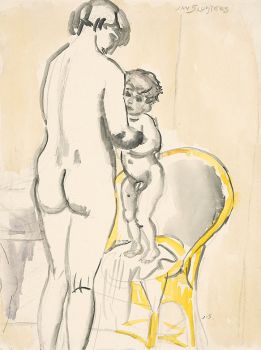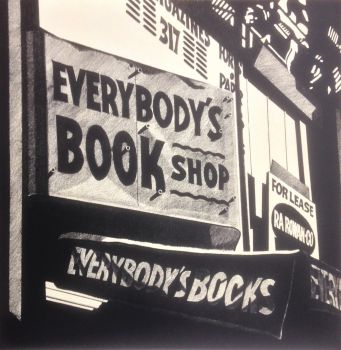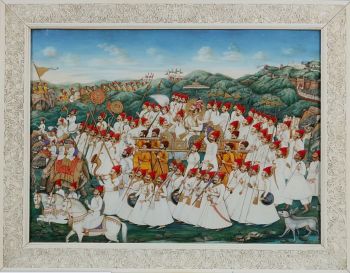‘Gezicht op de Reede van Paramaribo’ - View of the Paramaribo Waterkant 1835
Artiste Inconnu
PapierAquarelle
53 ⨯ 76 cm
Prix sur demande
Zebregs & Röell - Fine Art - Antiques
- Sur l'oeuvre d'artDutch School (19th century)
Titled lower center
Watercolour on paper, H. 53 x W. 76 cm
It's possible to date this view on the Paramaribo harbour fairly accurate to circa 1835. The church that was destroyed in the fire of 1821 was rebuilt in 1833 and can be seen on the right between the masts of two ships. To the left is the bridge over the Knuffelsgracht, the ‘English Bridge’. Before the fire, there were buildings to the left of the canal.
In the front slave ships can be seen lying at anchor, having just brought in the enslaved people that survived the long voyage and waiting for tobacco and sugar to take back to Europe. In the foreground, a tent boat or korjaal with several six enslaved rowers can be seen, probably transporting their plantation owner.
Provenance:
Stichting Edwina van Heek, the Netherlands
Foundation named after Edwina van Heek-Burr Ewing (1872-1945), born in St. Louis USA, and married to the Dutch textile manufacturer Jan Bernard van Heek.
Source:
Clazien Medendorp, Kijkkasten uit Suriname: diorama’s van Gerrit Schouten, Amsterdam, 2008 - Sur l'artiste
Il peut arriver qu'un artiste ou un créateur soit inconnu.
Certaines œuvres ne doivent pas être déterminées par qui elles sont faites ou elles sont faites par (un groupe d') artisans. Les exemples sont des statues de l'Antiquité, des meubles, des miroirs ou des signatures qui ne sont pas claires ou lisibles, mais aussi certaines œuvres ne sont pas signées du tout.
Vous pouvez également trouver la description suivante :
•"Attribué à …." A leur avis probablement une oeuvre de l'artiste, au moins en partie
•« Atelier de …. ou « Atelier de » À leur avis, une œuvre exécutée dans l'atelier ou l'atelier de l'artiste, éventuellement sous sa direction
•« Cercle de… ». A leur avis une oeuvre de la période de l'artiste témoignant de son influence, étroitement associée à l'artiste mais pas forcément son élève
•« Style de … ». ou "Suiveur de ...." Selon eux, une œuvre exécutée dans le style de l'artiste mais pas nécessairement par un élève ; peut être contemporain ou presque contemporain
•« Manière de… ». A leur avis une oeuvre dans le style de l'artiste mais d'une date plus tardive
•"Après …." A leur avis une copie (quelle qu'en soit la date) d'une oeuvre de l'artiste
•« Signé… », « Daté… ». ou « Inscrit » À leur avis, l'œuvre a été signée/datée/inscrite par l'artiste. L'ajout d'un point d'interrogation indique un élément de doute
• "Avec signature ….", "Avec date ….", "Avec inscription …." ou "Porte signature/date/inscription" à leur avis la signature/date/inscription a été ajoutée par quelqu'un d'autre que l'artiste
Êtes-vous intéressé par l'achat de cette oeuvre?
Artwork details
Related artworks
- 1 - 4 / 12
Anthonie Pieter Schotel
BOTTERS OP DE ZUIDERZEE MET DOOR HET WATER WEERKAATST ZONLICHT1920 - 1950
Prix sur demandeGalerie Het Noorderlicht
1 - 4 / 24- 1 - 4 / 24
Artiste Inconnu
A Surinam-themed Amsterdam long-case clock1746 - 1756
Prix sur demandeZebregs & Röell - Fine Art - Antiques
 Sélectionné par
Sélectionné parGallerease Magazine
Artiste Inconnu
Deux portraits d'étude du Mas Marco Kartodikromo1900 - 1950
Prix sur demandeZebregs & Röell - Fine Art - Antiques
Artiste Inconnu
A Surinam-themed Amsterdam long-case clock1746 - 1756
Prix sur demandeZebregs & Röell - Fine Art - Antiques
 Sélectionné par
Sélectionné parGallerease Magazine
1 - 4 / 24- 1 - 4 / 24
Artiste Inconnu
GRANDE PEINTURE INDIENNE IMPORTANTE ET RARE `` STYLE D'ENTREPRISE '' SUR IVOIRE REPRÉSENTANT UN DÉFI1850 - 1900
Prix sur demandeZebregs & Röell - Fine Art - Antiques
 Sélectionné par
Sélectionné parDanny Bree
Artiste Inconnu
UN PLAT EN ARGENT LOBBED INDONÉSIEN INSOLITElate 17th
Prix sur demandeZebregs & Röell - Fine Art - Antiques
Artiste Inconnu
The bell of the VOC fortress in Jaffna, Sri Lanka1747
Prix sur demandeZebregs & Röell - Fine Art - Antiques
 Sélectionné par
Sélectionné parDanny Bree
1 - 4 / 12

